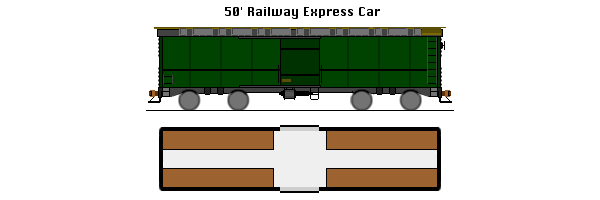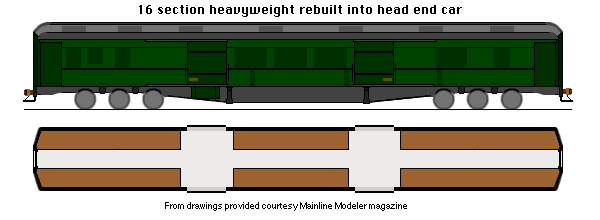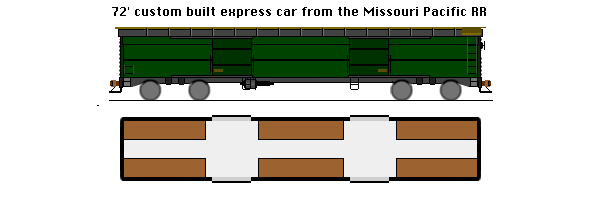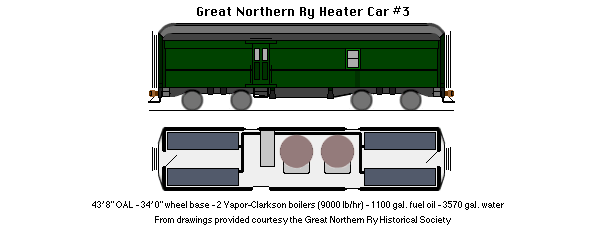
Content provided by Those Classic Trains
Beyond the orderly ranks of ACF, Bethlehem and St Louis Car lies a different breed of head end equipment.

One thing you see more and more of in the postwar period are express box cars. The evolution of express equipment has had some odd twists. With the dawn of the Heavyweight period, the railroads concentrated on sleepers, coaches, diners and the like. RPO cars were made of steel to suit Federal regulations. But the humble express car would have to wait its turn.
By the end of the War, when the old head end equipment simply could not hold together any longer, thinking about just what a car is has changed. The early steel RPOs were built into short versions of the clerestory Pullman carbody in order to take advantage of tooling and for esthetics. Faced with the need for a new generation of equipment (and with the Heavyweight tooling mostly gone now) the logical choice is a spin off on the steel box car.
Here is a typical example of the beast: a 50 foot box car fitted with high speed passenger trucks, steam and signal lines to match those found on passenger cars. Inside is fairly typical of head end gear. Very few, if any, of these cars have been provided with facilities for an Express Messenger: a profession that is rapidly disappearing.

A sad fate for a proud sleeper. As traffic steadily dwindles and new Lightweight equipment comes into service, the ranks of Heavyweight sleepers are steadily dwindling. There is, however, a need for head end equipment. The railroads had not spent a lot of money on such during the Depression and the War. Now the wooden baggage cars that had withstood the test of time are worn out.
So from storage tracks around the country, surplus 12-1s, 10-2s and 16 section cars (as shown above) are being stripped of their innards, steps and underbody gear, their windows closed up with sheet metal, and express car doors set into their sides.
These conversions are fairly common and are especially popular with smaller or less solvent roads as they can be had essentially at scrap prices. Many are rebuilt in company shops from old coaches. Some roads, including the New York Central, the Seaboard and the Southern Railway operate them extensively.
Note that these cars are still mostly painted the traditional Pullman green. For most roads, only a relatively few cars for their top trains are given the fancy paint schemes (there are a few roads, such as the B&O, who have redone their entire fleets). For the bulk of equipment used on regionals and accommodation trains, there is no sense in wasting the paint.
Their service has proved short lived, however. The wholesale withdrawal of bulk mail and express shipments, steadily dwindling head end routes and the equipments age will soon catch up with them.

This underslung character is one of a small batch of cars built for the Missouri Pacific railroad. Railroads have always indulged their eccentricities in head end equipment, and as the postwar reequipping goes on, the array of small lot and often home built equipment can be truly remarkable. One can only speculate as to why the Mopac selected such a long car with low overhead: perhaps to give it a coupling length similar to the passenger cars it runs with.

And last - but most certainly not least - a Wild and Woolly denizen of the Great Northern. Operating through the severe winters of Montana and the Dakotas can try the steaming capacity of even the best locomotives. When the diesels came along, the situation is even more critical as an E-9s train heat boilers can not hope to compare to a 4-8-2. Thus - on the Great Northern, Northern Pacific, Milwaukee Road, UP and the Canadian roads (plus a few others here and there) - these special cars supplement the train heat of the locomotives. The GN cars are typical: a small lot of a half-dozen similar cars built in ones and twos over time. Typically, they carry 1 or 2 train heat boilers (a dynamo may be carried in place of the second boiler) along with fuel oil and water in sheet metal bunkers. These cars number about evenly between passenger type carbodies and express box carbodies. The on-board fuel and water supplies are good for about 4 hours of maximum effort.
| Home Site Map Search Contact |
North East Rails © Clint Chamberlin. |